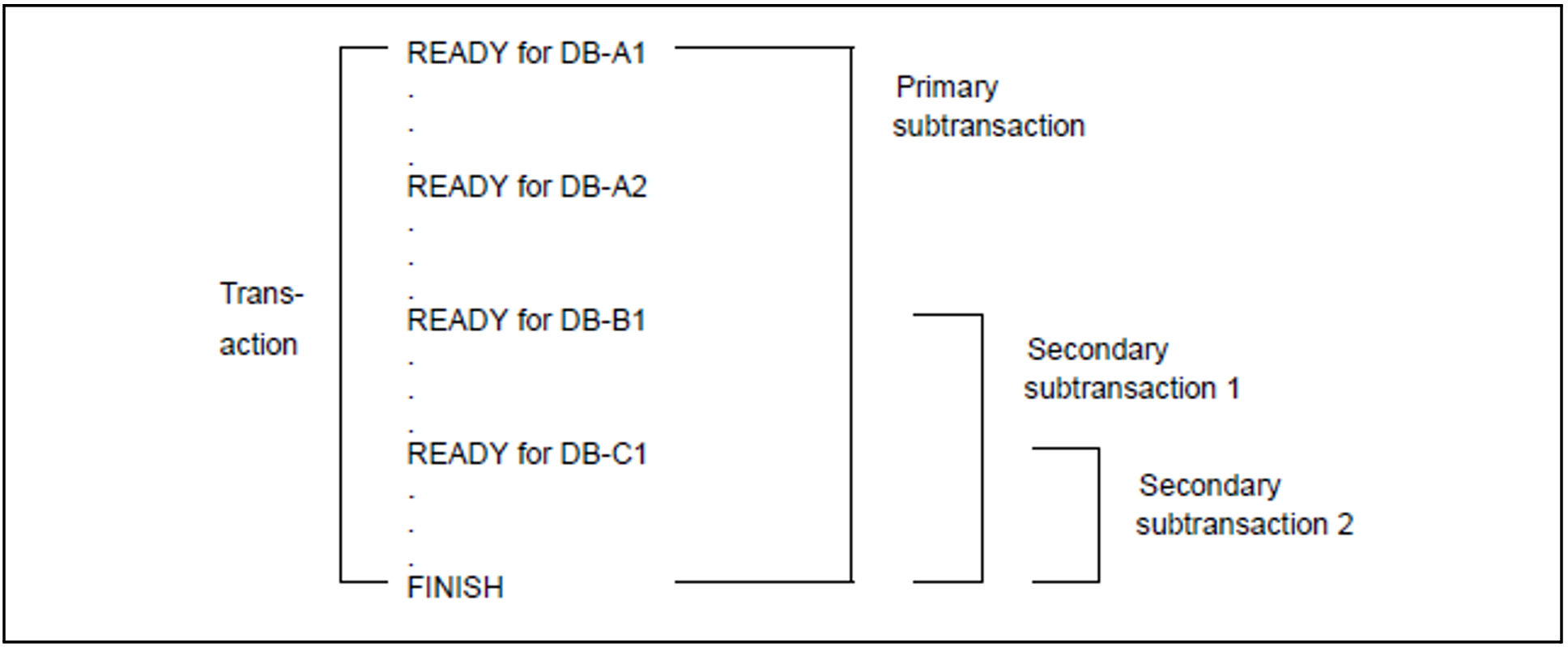Loading...
Select Version
&pagelevel(4)&pagelevel
All processing chains that address the databases of one DB configuration form a single subtransaction.
The subtransaction that addresses the local configuration is called the primary subtransaction, and all other subtransactions are called the secondary subtransactions (see example).
In other words, the primary subtransaction always runs in the local configuration, and secondary subtransactions always run in a remote configuration.
Example
Consider the following configurations and databases:
CONF-A | CONF-B | CONF-C |
|
|
|
|
In this case, the application program that triggers the sample transaction below is connected to the configuration CONF-A. Consequently, the following applies:
Figure 15: Primary and secondary subtransactions
The first READY statement of a transaction opens the primary subtransaction. If the first READY statement of a transaction addresses a remote database, UDS-D generates a so-called dummy subtransaction as the primary subtransaction. As soon as a READY statement of the transaction addresses a local database, this dummy subtransaction becomes a real primary subtransaction.

